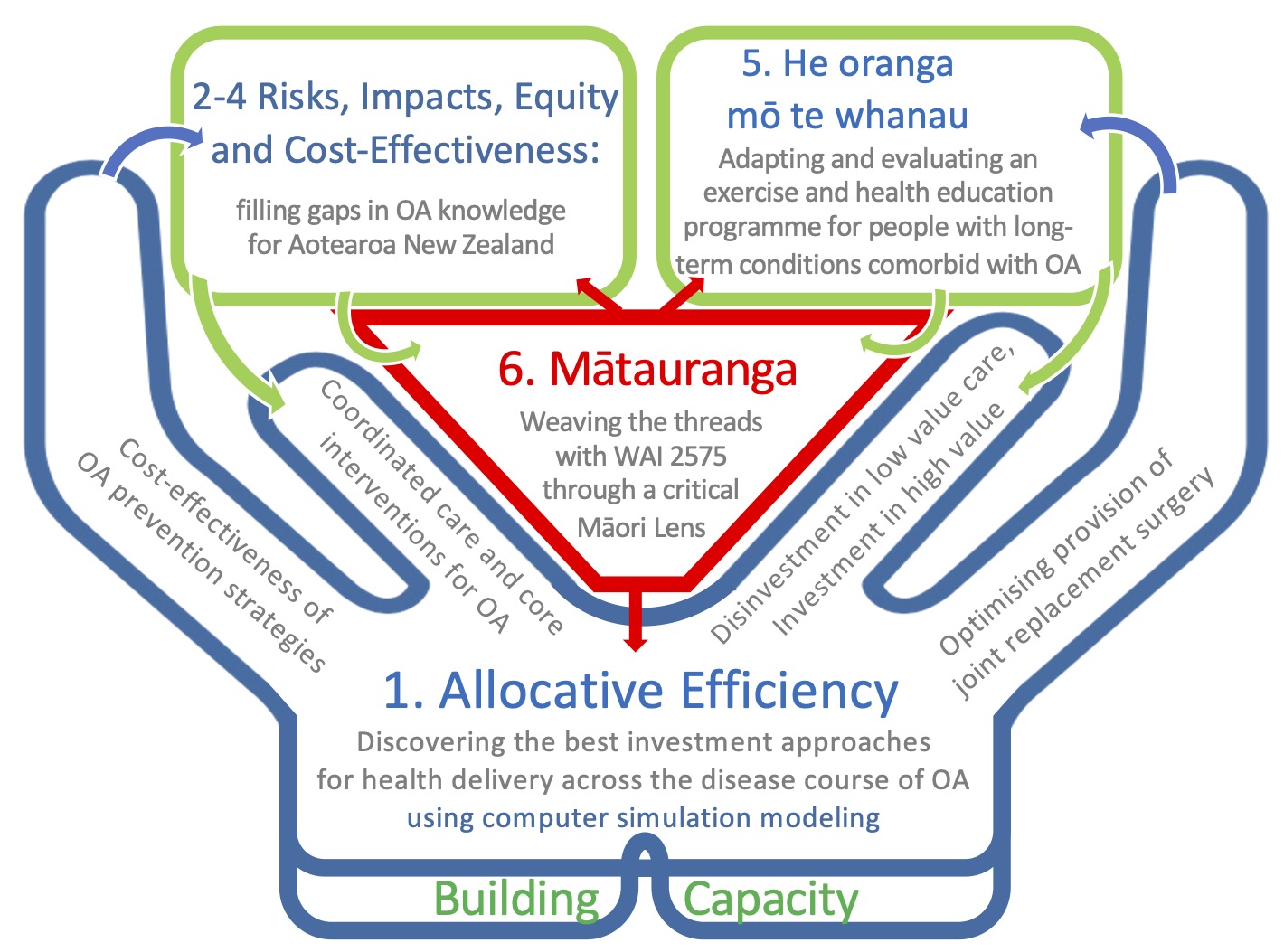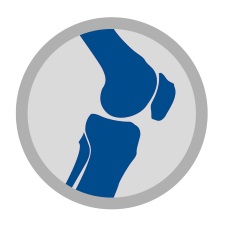HRC Programme 2022–2027
Reducing the burden of osteoarthritis in Aotearoa New Zealand
Summary of Research Project
Osteoarthritis is among the most common long-term conditions in New Zealand. The burden of pain, disability and economic costs is rising – especially for Māori. Access to treatments is poor. Joint replacement surgery is highly cost-effective, but demand – already straining capacity – is growing rapidly. Cost-effective interventions for early- and mid-stage osteoarthritis are known to have good outcomes and are potentially cost-saving compared to current practice, but are not being delivered. Multimorbidity is common. Coping with future demand will require optimising resource allocation; we must consider preventive measures and coordinated delivery of accessible, equitable, effective and cost-effective interventions. This programme of research of four linked multi-disciplinary projects will look at ways to deliver the best value for money and equity in managing osteoarthritis in the New Zealand public healthcare system, from prevention through to joint replacement surgery.

The programme aims to address the following key issues:
The allocative efficiency of intervention delivery across the disease course of OA, including health economic evaluation, population-based data analyses, equity analysis and computer simulation modelling.
2. Risks, Impacts, Equity, and Cost-Effectiveness
Computer simulation modelling requires detailed input data describing the key relationships between patient attributes, event occurrence, and the cost and effects outcomes associated with disease states and interventions. In addition to data already used to provide inputs for our existing NZ-MOA simulation model, past HRC-funded projects, published results from the epidemiological literature, and findings from other projects within the Programme, we will conduct additional empirical and epidemiological studies to provide necessary input data for modelling work.
Improving outcomes for people with hip and knee OA and comorbidities.
A mātauranga approach to access, resourcing, and outcomes for Māori with OA.
